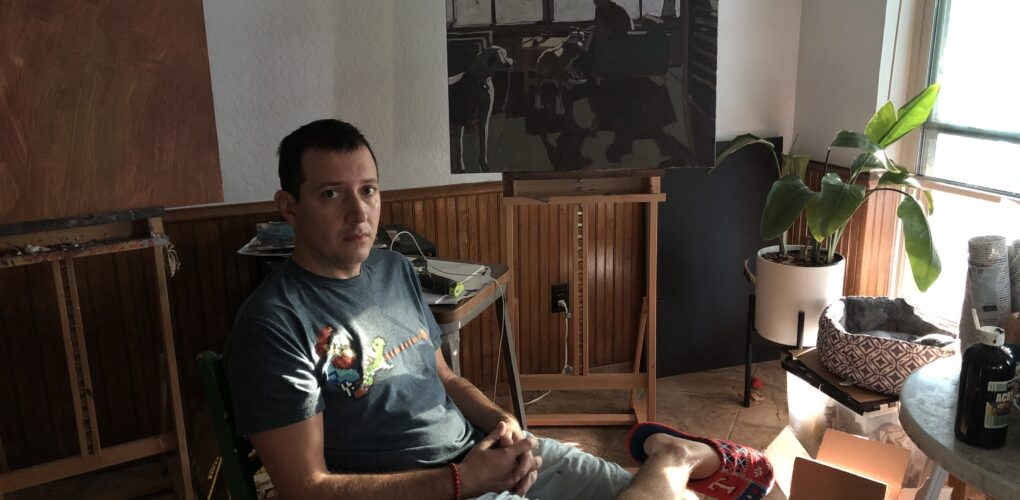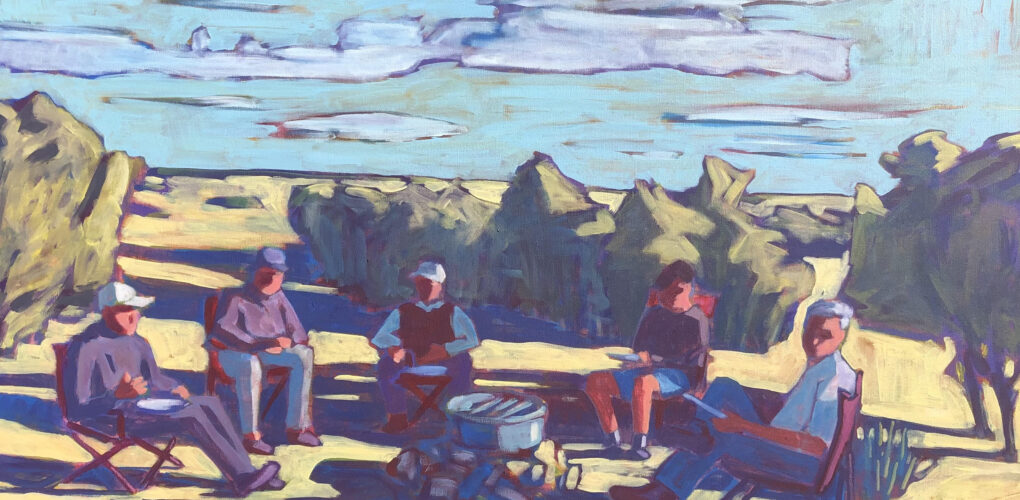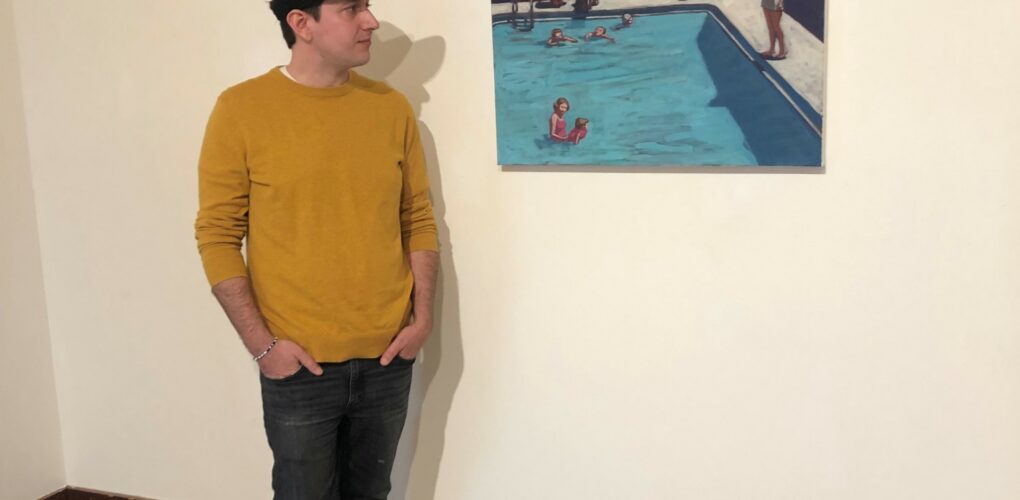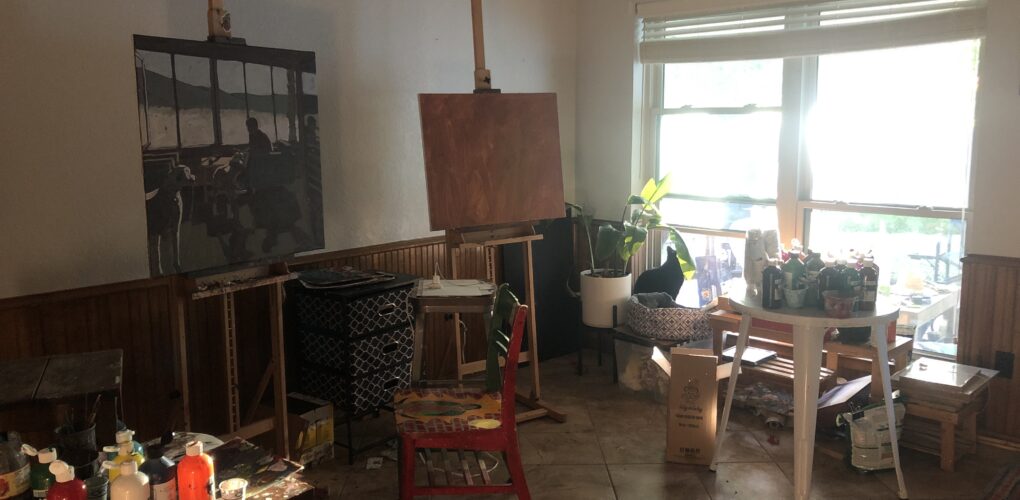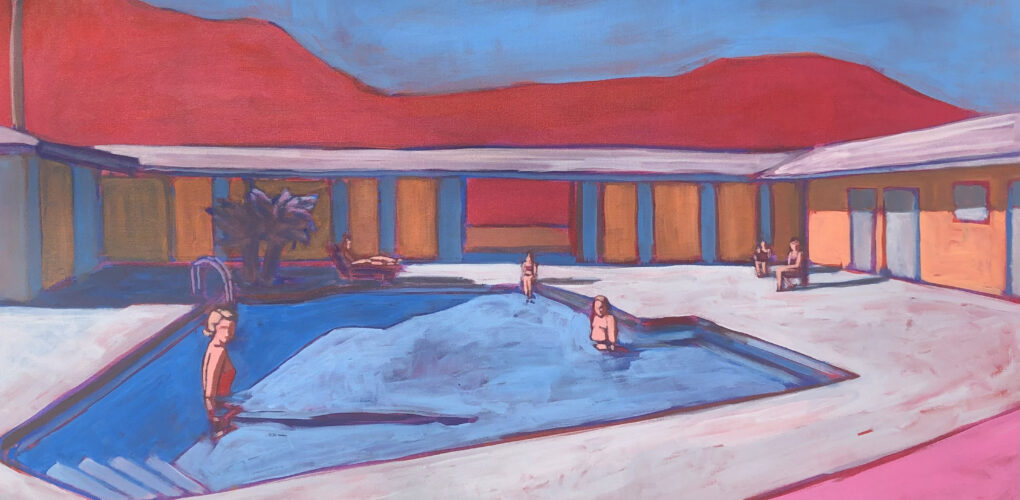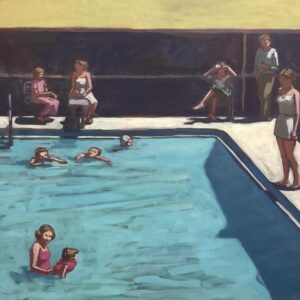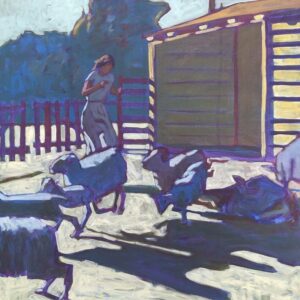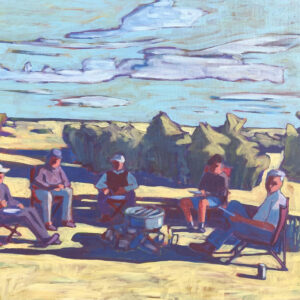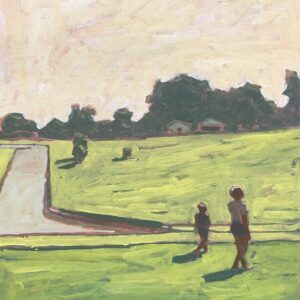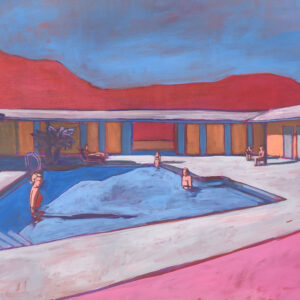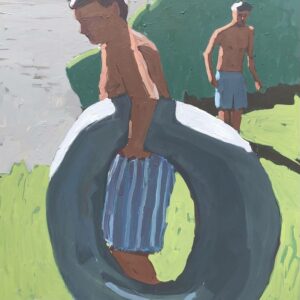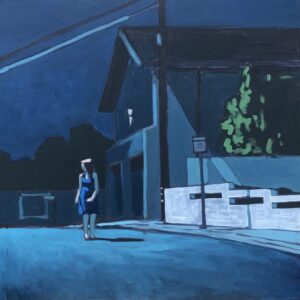One to Watch
 Michael Van Elevates the Everyday
Michael Van Elevates the Everyday
As a student at Santa Clara University in California, Michael Van fell in love with the paintings of the Bay Area Figurative Movement, a revitalization of figurative painting that sprung up around San Francisco in the mid-twentieth century. Epitomized in the works of Wayne Thiebaud, David Park, and Richard Diebenkorn, the movement is marked by decisive brushstrokes, synthetic colors, and geometric treatment of light and shadow. Now Michael brings these sensibilities to life in his own paintings while building a signature repertoire of planar forms and saturated colors that capture the beauty in the everyday. His practice is grounded in the simple habit of concentrated looking (and squinting) to appreciate the fundamental relationships between light, shadows, and forms around him, which he then translates into confident, tactile compositions. Refreshingly straightforward and mindful, the Texas-based painter finds satisfaction in simplicity, and his nostalgic paintings invite viewers to do the same.
Tell us about who you are and what you do. What’s your background?
My name is Michael Van and I am a painter. I like to paint people in familiar, comforting places illuminated in sunlight. I have a degree in physics, worked in hospitality and marketing, and have painted throughout my entire life. I work out of my home studio in Euless, Texas, with my wife, Jana, and cat, Pickles. Every day I spend a lot of time intently “seeing”—purposefully trying to observe and process light, shadow, and colors down to single pixels like a digital camera. Really thinking to myself, what is that color? And I find in painting that recreating these colors that I see, mixing this and that and building it all back up to a sort of recognizable offspring image—is so fulfilling. Sight is a beautiful and complex sensation; I am grateful that I can be engulfed in this sensation for a living.
What does your work aim to say? What are the major themes you pursue in your work?
It’s all romanticizing simple pleasures in suburban life. I read the paintings as casual snapshots of a time and place that capture a special personal moment and at the same time, are especially unextraordinary. A familiar and comforting memory that your mind wanders to when you’re trying to fall asleep. Pool #47 I think captures that warm fuzzy nostalgia—a summer day at the pool, one of many days just like it and not particularly different from the rest.
Can you walk us through your process for creating a work from beginning to end?
I start by finding a suitable reference photograph. I’m looking for high tonal contrast and interesting shadows in natural light—usually from morning and afternoon sunlight. Subject-wise I’m drawn to people, water, houses, chairs… Is there anything better than a chair shadow? And I avoid spherical shapes that would demand gradients. I can’t stand painting gradients.
When I’m actually painting, the majority of the time is spent mixing color. I spend relatively little time actually brushing it onto the canvas. Both are done hastily. This quick decision-making with brushwork and color-mixing is intentional. I’m convinced that the more I rely on instincts rather than calculation—the more honest and true to myself the painting will be. Which is what I’m after.
Who are your biggest influences and why?
Definitely Richard Diebenkorn and the whole Bay Area Figurative gang are stylistic influences. I had a professor at Santa Clara University who was all about it and it rubbed straight off on me. The loose painterly style is very attractive to me. The playfulness of opacity and translucency. And they all seem to convey effortlessness—though I’m positive it wasn’t. I’m also in awe of children’s artwork. It is so uninhibited and pure. Their imagination is truly boundless—it’s not obstructed by rules, expectations, or aspirations. There is something so beautiful about that imaginative freedom expressed visually.
Do you explore any current social and political issues through your work? If so, how?
I’m more of an “Art for Art’s Sake” kind of guy. While I appreciate dialogues on bettering the world—it’s not something I deliberately think about when producing artwork. I’m here to make people’s living rooms more interesting to be in. And I’m proud and fortunate to do that.
How do you hope viewers respond to your works? What do you want them to feel?
I think art is most effective and beautiful when it causes us to be vulnerable and introspective. That’s the end-all for me. If viewers feel they are experiencing something genuine, something not-contrived, and if that visual experience moves them to look inward into themselves—however painful or pleasant—that’s a very successful work of art.
If you couldn’t be an artist, what would you do, and why?
I have this romanticized idea of being a butcher at a small grocery store. It’s an old profession. It’s hands-on, physical, requires caution and patience, and a real intimacy with the animals that we eat. I have a lot of respect for butchers. And I assume the perks are great.
What was the best advice given to you as an artist?
“Squint.” Squinting reduces the amount of light entering your pupils, and the amount of information your brain receives to form an image. It is incredibly useful for simplifying and then identifying colors, and I do it all the time.
Love reading about all things art? You can have articles from Canvas, curated collections, and stories about emerging artists delivered straight to your inbox. Sign up for the Saatchi Art Newsletter.
